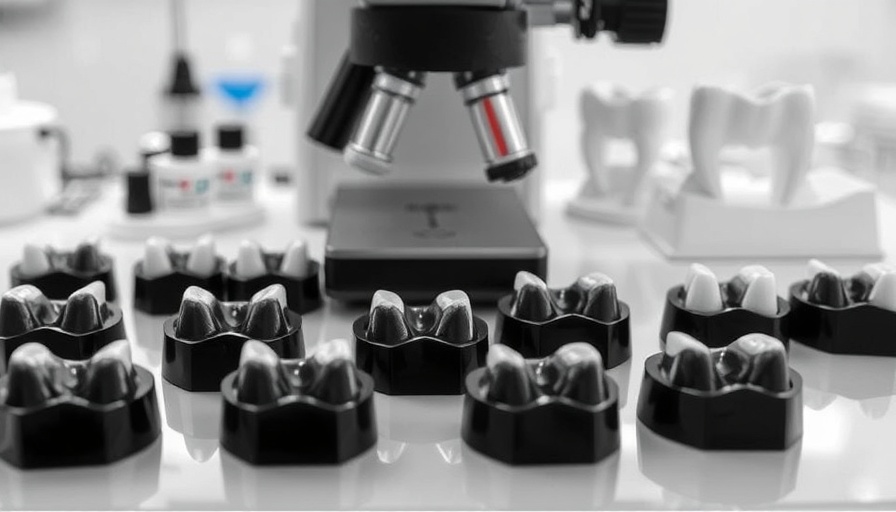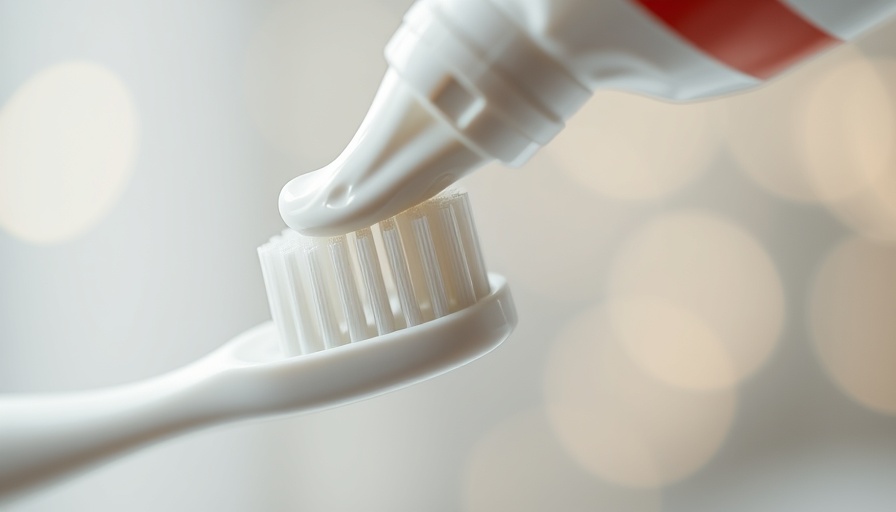
Understanding the Erosive Effects of Everyday Beverages on Dental Restorations
Recent studies have shed light on an alarming finding: both cola and orange juice can significantly reduce the microhardness of resin restorative materials in dental applications. Researchers conducted an analysis comparing the erosive potential of these popular beverages, and the results indicate immediate implications for dental health and material science. Within the intricate landscape of dental restorations, particularly resin-based materials, maintaining surface integrity is crucial for longevity and aesthetic performance.
What the Study Reveals About Microhardness
The study published in the Annals of Medical and Health Sciences Research systematically immersed specimens of two commonly used materials—compomer and giomer—in cola and orange juice over a duration of one week. Findings highlighted a substantial increase in surface roughness, indicating deterioration of these materials post-immersion. In fact, samples submerged in cola showcased a noticeable increase in roughness compared to those in orange juice and water. The compelling evidence suggests that frequent consumption of these acidic beverages can critically affect the stability of dental restoratives.
The Chemical Composition: Why Acidity Matters
The erosive effects of fruit juices and soft drinks can primarily be attributed to their acidic nature. As noted in the findings, both cola and orange juice typically present a low pH level, with cola measuring a pH of around 2.74 versus 3.72 for orange juice. Such low pH levels are sufficiently acidic to promote enamel erosion and disrupt the microstructure of restorative materials. The implications for dental restoration wear suggest a need for heightened awareness regarding beverage choices in oral care routines.
Compomer vs. Giomer: Understanding Material Vulnerabilities
While both materials suffered deterioration, the extent varied significantly. The compomer—a polyacid-modified resin composite—exhibited a greater susceptibility to erosion compared to giomer, which has a higher filler content. This discrepancy illuminates the importance of material selection in dental restorations. Healthcare providers must weigh the benefits of different restorative materials against their durability when faced with acidic food and beverage consumption.
Broader Implications: Prevalence of Dental Erosion
This discussion takes place against a backdrop of rising dental erosion incidents largely attributed to changes in dietary habits and increased consumption of acidic drinks. Patients, particularly children and adolescents, should be educated on these risks and consider alternatives or protective measures to preserve their dental health. Awareness initiatives can contribute to reducing the incidence of irreversible enamel loss and the need for restorative interventions.
Future Predictions: Rethinking Dietary Choices
The implications of this study provoke wider discussions about dietary habits and long-term health. As societies grapple with dietary choices, these revelations serve as a clarion call for both dental professionals and consumers alike. Future research and developments may explore protective formulations or coatings that could mitigate the erosive potential of everyday beverages, safeguarding dental materials and natural teeth alike.
For individuals invested in their dental health, understanding the effects of what you consume on restorative materials is crucial. This study reignites discussions around the intersection of diet and dental care, urging a shift towards conscious consumption of acidic beverages.
In conclusion, the synthesis of findings regarding resin restorative materials' health provides invaluable insights for both dental practitioners and patients. Ongoing research will help elucidate the effectiveness of different restorative materials under acidic conditions and better inform choices within dental practice.
 Add Row
Add Row  Add
Add 




Write A Comment